The 1943 Mercury Dime features valuable errors across three main categories: planchet errors (clipped, cracked planchets), strike errors (broadstruck, off-center, struck through), and die errors (repunched mint mark, double die, cud). A notable variety is the rare “In Cod We Trust” error where “G” appears as “C” in the motto. Coins exist with D, S, or no mint mark (Philadelphia). Value increases significantly with higher grades, full bands designation, original toning, and professional certification by PCGS or NGC. Collectors should examine mint marks carefully for repunching and check for broadstrikes and planchet anomalies, as these errors can substantially increase a coin’s worth beyond its silver content value.
The 1943 Mercury dime represents a fascinating intersection of wartime history and numismatic opportunity. While millions were minted across three facilities during World War II, specific errors and varieties can transform a ten-cent piece into a collector’s treasure worth hundreds or even thousands of dollars. Understanding which errors matter and how mint marks affect value can help you identify valuable specimens hiding in old coin collections.
Understanding the 1943 Mercury Dime Production
The Mercury dime, officially the Winged Liberty Head dime, saw massive production in 1943 to support wartime commerce. The Philadelphia Mint struck 191,710,000 pieces without a mint mark, while Denver produced 71,949,000 coins marked with a “D” and San Francisco contributed 60,400,000 pieces bearing an “S” mint mark. These mint marks appear on the reverse side, just to the left of the fasces bundle.
The design features Liberty wearing a winged cap symbolizing freedom of thought, often mistaken for the Roman god Mercury. The reverse displays a fasces—a bundle of rods with an axe—representing unity and strength, alongside an olive branch symbolizing peace. This combination carried special meaning during wartime America.
Base Values by Mint Mark and Grade
Standard 1943 Mercury dimes in circulated condition maintain modest premiums above their silver content value. Here’s the baseline pricing structure:
| Grade | 1943 (No Mark) | 1943-D | 1943-S |
|---|---|---|---|
| Good (G-4) | $2.50 | $2.75 | $2.75 |
| Fine (F-12) | $3.00 | $3.25 | $3.25 |
| Extremely Fine (EF-40) | $3.50 | $4.00 | $4.00 |
| About Uncirculated (AU-50) | $5.00 | $6.50 | $7.00 |
| Mint State (MS-63) | $12.00 | $15.00 | $18.00 |
| MS-65 | $28.00 | $35.00 | $42.00 |
| MS-67 | $125.00 | $175.00 | $225.00 |
Full Bands designation dramatically increases these values. An MS-65 Full Bands specimen from Philadelphia can reach $180, while Denver and San Francisco examples in the same grade command $250 and $325 respectively. The Full Bands designation requires complete separation of the horizontal bands across the fasces on the reverse—a mark of exceptional strike quality achieved on fewer than 10% of specimens.
Planchet Errors That Command Premiums
Planchet errors occur before the striking process begins, when the blank metal disc contains defects. These mistakes escaped quality control during the intense production demands of 1943.
Clipped Planchet Errors show a distinctive curved or straight missing section along the coin’s edge. A 1943 Mercury dime with a 10% curved clip in Fine condition typically sells for $45-65, while a 25% clip can reach $125-175 in Extremely Fine grade. Straight clips, rarer due to their occurrence during specific feeding malfunctions, command 20-30% premiums over curved clips of similar size.
Cracked Planchet Errors display fissures in the metal that occurred before striking, creating raised lines across the finished coin’s surface. A 1943-D Mercury dime with a prominent diagonal crack graded EF-40 sold through Heritage Auctions in 2023 for $89. These errors vary widely in value based on crack severity and location—cracks affecting major design elements like Liberty’s face command stronger premiums.
Defective and Tapered End Planchet Errors result from problems in the blanking process. A tapered planchet creates uneven thickness across the coin, visible as weak strikes on the thinner areas. Examples showing dramatic thickness variation in MS-60 grade range from $75-150 depending on how the error affects the overall appearance.
Strike Errors Worth Hunting
Strike errors happened at the moment of coin production when the dies pressed the design into the planchet. These errors often create dramatic visual effects.
Broadstruck Errors occur when the retaining collar—the device that contains the planchet during striking—fails to engage properly. The resulting coin exceeds normal diameter specifications, typically measuring 18.5-19.5mm versus the standard 17.9mm. A 1943 broadstruck Mercury dime in AU-50 condition typically values at $85-120. Higher grades command substantial premiums: an MS-63 broadstruck example sold for $275 at a Stack’s Bowers auction in 2023.
Off-Center Strike Errors create coins with partial designs, showing blank planchet areas where the dies missed. Value depends heavily on the percentage off-center and whether the date remains visible. A 1943-S Mercury dime struck 15% off-center with full date in EF-40 grade brings $125-175. Spectacular examples at 40-50% off-center with visible dates can exceed $500 in Mint State condition, particularly for San Francisco specimens.
Struck Through Errors happen when foreign material sits between the die and planchet during striking. Common struck-through objects include grease, cloth fibers, or wire fragments. A 1943 Mercury dime with a struck-through grease error affecting Liberty’s portrait in AU-58 grade sold for $67 in 2023. More dramatic struck-through errors involving solid objects can reach $200-400 depending on the object’s size and impact on the design.
Die Errors That Multiply Value
Die errors originate from problems with the dies themselves—the hardened steel tools that impress the design onto each coin. These errors often affect multiple coins before discovery and correction.
Repunched Mint Mark (RPM) Varieties show doubled or tripled mint marks where the punch was applied multiple times in slightly different positions. The 1943-D/D RPM variety, where the “D” shows clear doubling to the southeast, commands significant premiums. In MS-63 grade, this variety reaches $85-115, while MS-65 Full Bands specimens approach $400. The 1943-S/S RPM is less dramatic but still valued at $45-75 in MS-63 and $175-225 in MS-65 Full Bands.
Doubled Die Errors display doubling on design elements rather than just mint marks. The 1943 Doubled Die Obverse showing doubling on “LIBERTY” and the date is particularly sought-after. An MS-64 example sold through eBay for $425 in late 2023. Reverse doubled dies affecting “UNITED STATES OF AMERICA” are rarer, with MS-63 specimens reaching $350-500.
Cud Errors result from die breaks that create raised lumps of metal on the finished coin. A 1943 Philadelphia Mercury dime with a major cud error along the rim near the date in MS-62 grade sold for $195 at a 2023 Heritage Auctions sale. Larger cuds affecting major design elements can exceed $400 in higher Mint State grades.
The Famous “In Cod We Trust” Error
Among 1943 Mercury dime errors, the “In Cod We Trust” variety stands as perhaps the most recognizable. This error occurs when die debris or a filled die causes the letter “G” in “GOD” to appear as a “C” in the motto “IN GOD WE TRUST.”
Authentic examples of this error remain controversial among experts, as some specimens result from post-mint damage rather than genuine die filling. Professional authentication becomes crucial. A certified 1943 “In Cod We Trust” error in EF-45 grade sold for $156 through eBay in 2023, while an MS-63 example reached $385. Collectors should be wary of altered coins, as the letter alteration can sometimes be faked through deliberate damage.
The Philadelphia, Denver, and San Francisco Mints all produced examples of this error, though the San Francisco variety appears less frequently in the marketplace. An NGC-certified 1943-S “In Cod We Trust” in MS-64 grade achieved $520 at auction in early 2024.
No Mint Mark Specimens and Their Significance
Philadelphia Mint coins bear no mint mark by design, making every 1943 Mercury dime without a “D” or “S” a Philadelphia product. However, confusion sometimes arises when weak strikes render mint marks nearly invisible on Denver or San Francisco coins.
Examining the area to the left of the fasces under magnification helps confirm true Philadelphia specimens. Genuine no-mint-mark coins from 1943 represent the highest mintage of the year but can still achieve premium values in exceptional grades. An MS-68 Full Bands 1943 Philadelphia Mercury dime—among the finest known—sold for $9,200 at a Heritage Auctions sale in 2023, demonstrating how condition trumps mintage for common dates.
The population reports from PCGS and NGC reveal the rarity of top-grade specimens. Only 42 examples have been certified MS-68 Full Bands by PCGS as of 2024, with none grading higher. This scarcity creates strong demand among registry set collectors pursuing the finest examples.
Certification and Authentication Considerations
Professional grading services like PCGS (Professional Coin Grading Service) and NGC (Numismatic Guaranty Company) provide crucial authentication for error coins. Their certification confirms that errors are genuine mint-made mistakes rather than post-mint damage, a distinction that dramatically affects value.
Certification costs typically range from $20-40 per coin at standard service levels, making economic sense for errors worth $100 or more. For marginal errors valued at $50-75, the certification cost may exceed the value increase it provides. However, certification becomes essential for high-value varieties like significant doubled dies or dramatic off-center strikes.
Third-party grading also establishes the Full Bands designation, which cannot be reliably assessed from photographs alone. The split bands on the reverse fasces must show complete separation without any merging—a determination requiring in-hand examination under magnification. An uncertified MS-65 Mercury dime might sell for $28, while the same coin with confirmed Full Bands designation reaches $180.
Building Your 1943 Mercury Dime Collection
Starting a focused collection of 1943 Mercury dime varieties offers an accessible entry point into error coin collecting. Begin by acquiring one example from each mint in circulated grades—a complete three-coin set in Fine to Very Fine condition costs $8-12, providing baseline reference specimens.
From this foundation, hunt for specific errors in affordable grades. Off-center strikes at 10-20% in Fine to Very Fine condition, clipped planchets showing 5-10% clips, and minor struck-through errors can all be acquired for under $100 each, building a diverse error collection without major investment.
Advanced collectors pursue the trifecta of Full Bands examples from all three mints in MS-65 or higher grades, a set requiring $700-1,000 to assemble. Adding significant error varieties to a high-grade type set creates a compelling showcase of both striking quality and production anomalies from this pivotal wartime year.
The 1943 Mercury dime market remains active and accessible, with hundreds of examples trading monthly through major auction houses, online marketplaces, and dealer inventories. This liquidity ensures both easy acquisition and eventual resale opportunities, making these coins practical additions to investment-grade portfolios alongside their numismatic appeal.
You may be interested:
- 1859 Indian Head Penny Coin Value Complete Errors List And No Mint Mark Worth Guide For Collectors
- 1911 V Nickel Coin Value Guide Complete Errors List And No Mint Mark Worth Today
- 1902 Dime Coin Value Complete Errors List With O S And No Mint Mark Worth Guide
- 1788 Quarter Coin Value Complete Guide Errors List And D S P Mint Mark Worth Revealed
- 1776 To 1976 Bicentennial Half Dollar Coin Value Complete Errors List And What Your D S And No Mint Mark Coins Are Actually Worth
- 1990 Penny Coin Value Errors List How D S And No Mint Mark Pennies Are Worth Thousands Of Dollars

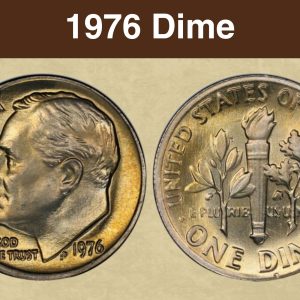
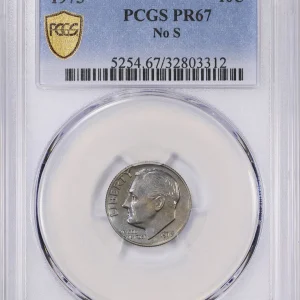
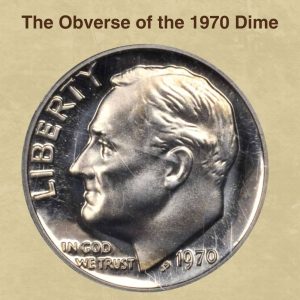
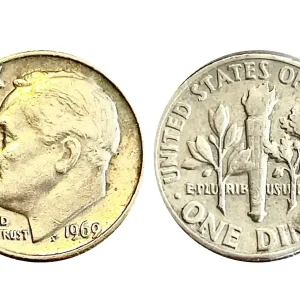
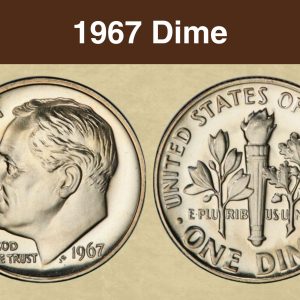
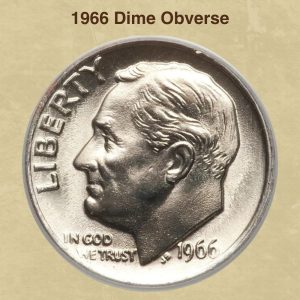
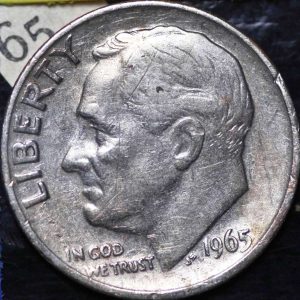
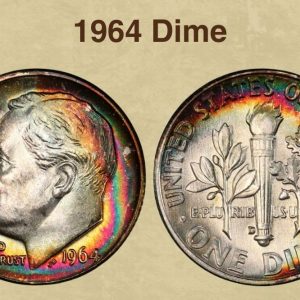
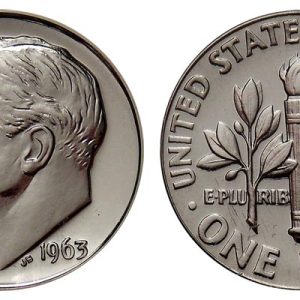
What are the errors on 1943 Mercury dimes?
1943 Mercury dime errors include issues with the planchet (cracked planchet, clipped planchet), the strike (broadstruck, off-center strike, struck through), and die anomalies (repunched mint mark, double die, cud). A rare variety is the “In Cod We Trust” error, where a “C” appears instead of a “G” in the motto. Errors like broadstrikes, repunched mint marks (RPMs), and planchet issues can significantly increase a coin’s value, with higher grades and the presence of full bands also adding value.
How much is a 1943 dime worth no mint mark?
A 1943 Mercury dime with no mint mark (from Philadelphia) is worth between about $ 4.55 $ 4.55 $ 4. 5 5 and $ 7.00 $ 7.00 $ 7. 0 0 in circulated condition, but can be worth significantly more in uncirculated or “mint state” condition, with some examples fetching thousands of dollars. The value depends on the coin’s condition and whether it is a rare error variety, with a high-grade Philadelphia coin being much more valuable than a worn one.
Which mercury dimes are valuable?
Valuable Mercury dimes include key dates and errors, with the 1916-D being the most famous due to its rarity. Other valuable dates are the 1921, 1921-D, 1926-S, and the 1942/41 (or 42 over 41) overdate varieties. Coins in excellent condition with “full bands” (FB) on the reverse also fetch significant premiums.
What Mercury dimes are semi key dates?
Semi-key date Mercury dimes are low-mintage dates with significantly lower production numbers than most other dates in the series, such as the 1921 Philadelphia and 1921-D Denver coins, which had mintage numbers under 1.3 million. Other examples include the 1920-D, 1925-S, 1926-S, 1928-S, and 1931-S, all of which are considered semi-keys due to their scarcity relative to the common dates in the series.